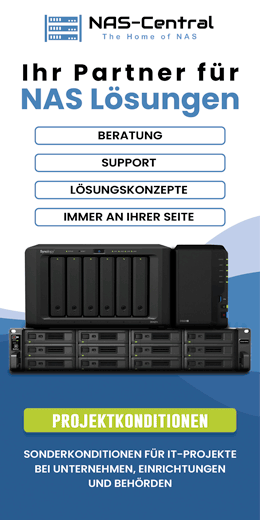- Mitglied seit
- 19. Feb 2016
- Beiträge
- 1.012
- Punkte für Reaktionen
- 142
- Punkte
- 89
In diesem Thread habe ich mich ein paar Mal OT gemeldet bzgl Synology_HDD_db und der Nutzung von inkompatiblen HDDs.
Thema ist dort aber M2 support. Deshalb dieser Thread:
1) So wie ich verstehe kann man eine DS3622xs+ schon initial mit einer unsupporteten HDD aufsetzen. Man bekommt dann eben erst einmal die nervigen Meldungen. Diese verschwinden aber wenn man dann das Script aufruft. Verstehe ich das richtig?
2) Man soll ja das Script beim Booten automatisch laufen lassen sowie nach einem DSM Update manuell. Ist es nicht besser das Script automatisch einmal pro Tag laufen zu lassen oder ist das Overkill?
3) Das Repo ist bald 3000 Mal gestared. Synology wird es definitiv kennen. Dadurch gehen Synology ja $ durch die Lappen. Wenn die deshalb den Kompatibilitätscheck in einer zukünftigen DSM Version ändern wird man wieder von den Warnungen genervt. Die Frage ist jetzt
1) Wie gross ist die Wahrscheinlichkeit dass das passiert?
2) Was macht man dann?
a) Darauf warten dass jemand der neuen Kompatibilitätscheck Code reverse engineered wie @DaveR es schon erfolgreich getan hat?
b) Mit den Warnungen leben? Geht das überhaupt?
c) ?
Hintergrund meiner Fragen ist dass sich jemand eine DS3622xs+ kaufen will und die soll natürlich die nächsten zig Jahre auch weiterhin mit nicht kompatiblen HDDs betrieben werden.
Thema ist dort aber M2 support. Deshalb dieser Thread:
1) So wie ich verstehe kann man eine DS3622xs+ schon initial mit einer unsupporteten HDD aufsetzen. Man bekommt dann eben erst einmal die nervigen Meldungen. Diese verschwinden aber wenn man dann das Script aufruft. Verstehe ich das richtig?
2) Man soll ja das Script beim Booten automatisch laufen lassen sowie nach einem DSM Update manuell. Ist es nicht besser das Script automatisch einmal pro Tag laufen zu lassen oder ist das Overkill?
3) Das Repo ist bald 3000 Mal gestared. Synology wird es definitiv kennen. Dadurch gehen Synology ja $ durch die Lappen. Wenn die deshalb den Kompatibilitätscheck in einer zukünftigen DSM Version ändern wird man wieder von den Warnungen genervt. Die Frage ist jetzt
1) Wie gross ist die Wahrscheinlichkeit dass das passiert?
2) Was macht man dann?
a) Darauf warten dass jemand der neuen Kompatibilitätscheck Code reverse engineered wie @DaveR es schon erfolgreich getan hat?
b) Mit den Warnungen leben? Geht das überhaupt?
c) ?
Hintergrund meiner Fragen ist dass sich jemand eine DS3622xs+ kaufen will und die soll natürlich die nächsten zig Jahre auch weiterhin mit nicht kompatiblen HDDs betrieben werden.









